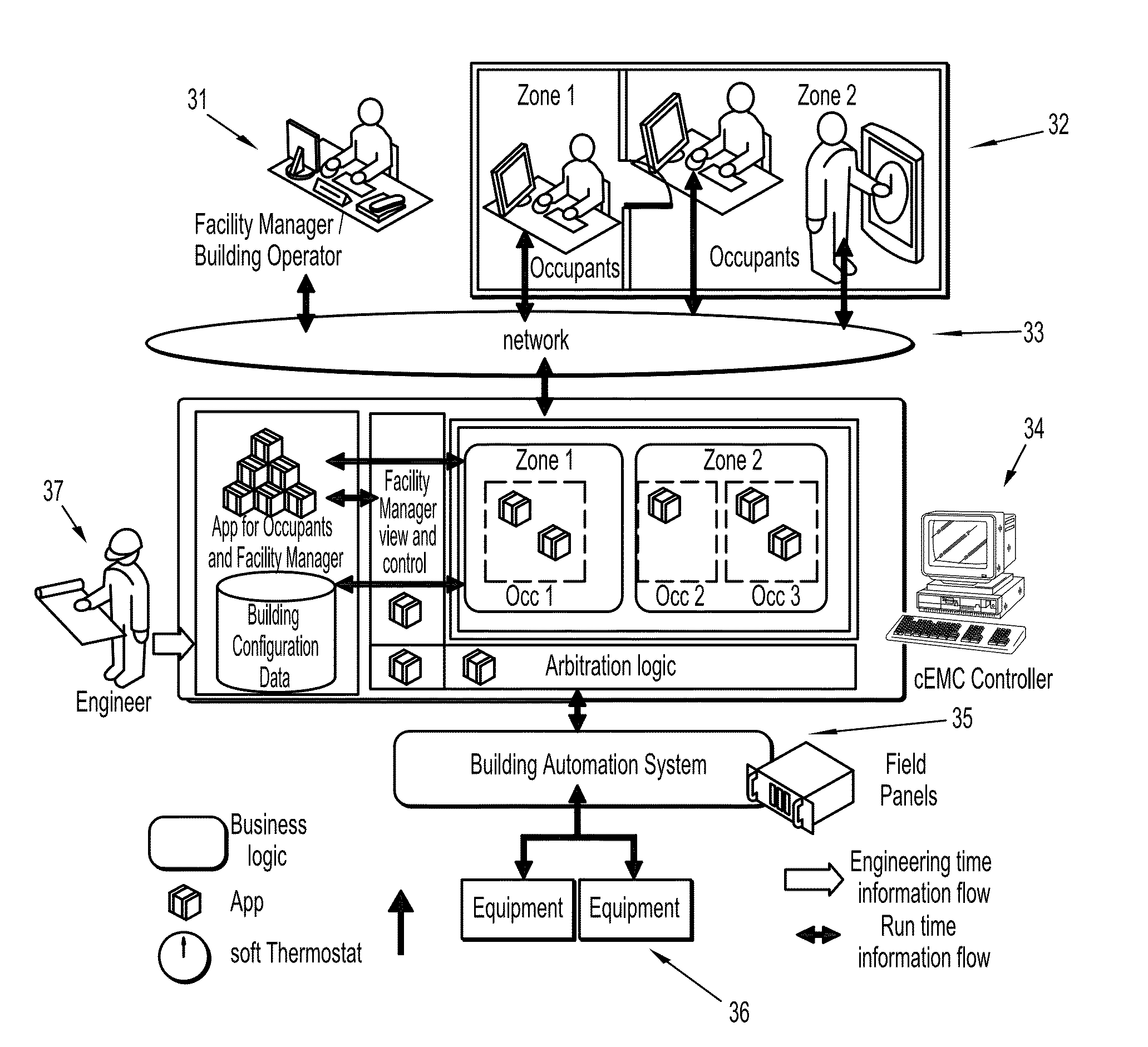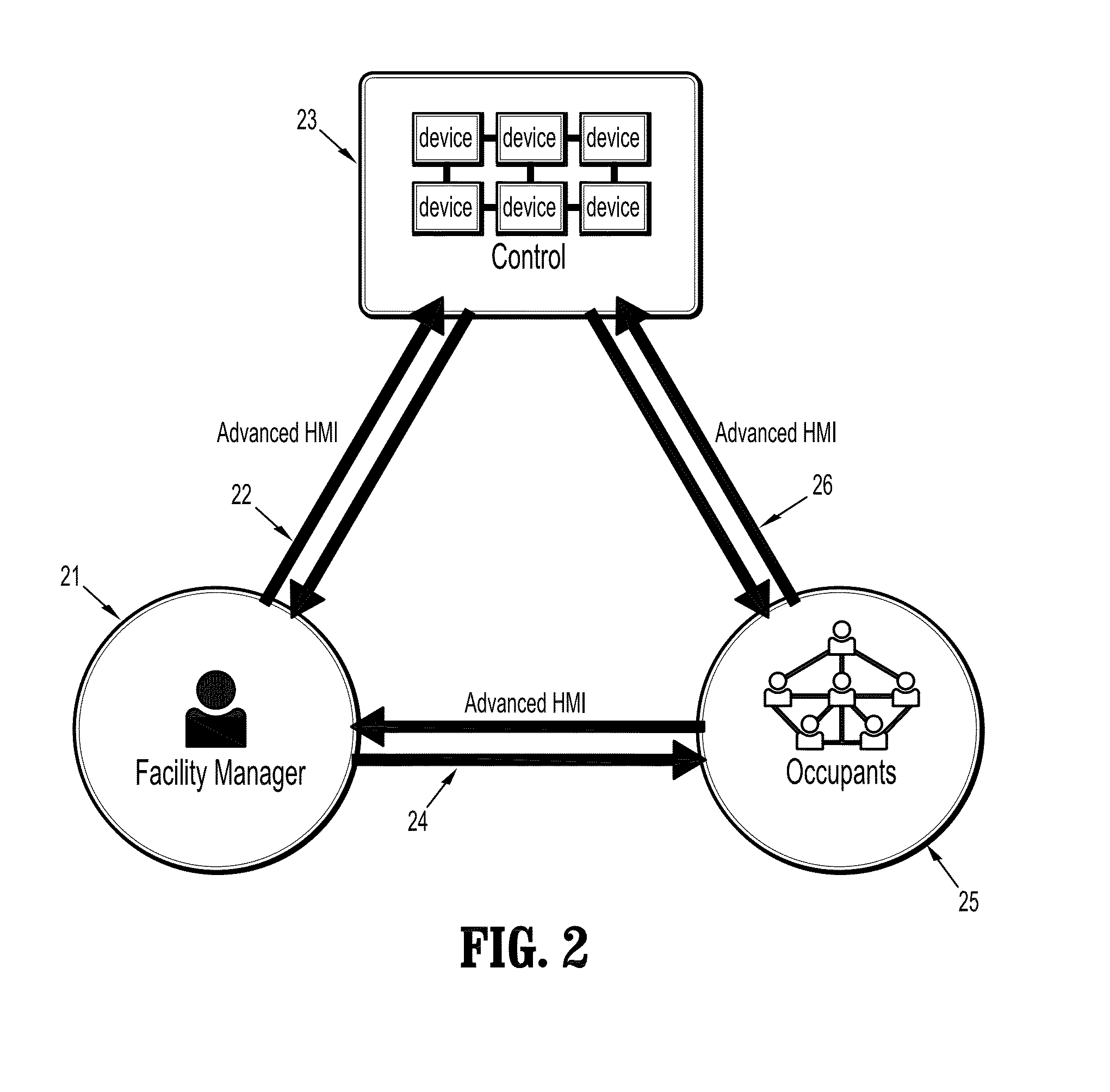Advanced human-machine interface for collaborative building control
a human-machine interface and building control technology, applied in adaptive control, data switching networks, instruments, etc., can solve the problems of reducing the opportunity for energy saving, bringing both energy waste and occupant comfort complaints, and state of the art building automation systems (bass) rarely deliver as much cost/benefit as expected, so as to improve communication patterns among different players and save at least 30%.
- Summary
- Abstract
- Description
- Claims
- Application Information
AI Technical Summary
Benefits of technology
Problems solved by technology
Method used
Image
Examples
Embodiment Construction
[0032]Exemplary embodiments of the invention as described herein generally include systems for an advanced human-machine interface for collaborative building control, while the invention is susceptible to various modifications and alternative forms, specific embodiments thereof are shown by way of example in the drawings and will herein be described in detail. It should be understood, however, that there is no intent to limit the invention to the particular forms disclosed, but on the contrary, the invention is to cover all modifications, equivalents, and alternatives falling within the spirit and scope of the invention.
[0033]A cEMC according to an embodiment of the invention is a vendor independent software platform which extends an existing building automation system (BAS) by means of active occupant engagement in energy management and comfort control. FIG. 3 illustrates an exemplary, non-limiting architecture, where the communication between cEMC and BAS is based on industry stan...
PUM
 Login to View More
Login to View More Abstract
Description
Claims
Application Information
 Login to View More
Login to View More - R&D
- Intellectual Property
- Life Sciences
- Materials
- Tech Scout
- Unparalleled Data Quality
- Higher Quality Content
- 60% Fewer Hallucinations
Browse by: Latest US Patents, China's latest patents, Technical Efficacy Thesaurus, Application Domain, Technology Topic, Popular Technical Reports.
© 2025 PatSnap. All rights reserved.Legal|Privacy policy|Modern Slavery Act Transparency Statement|Sitemap|About US| Contact US: help@patsnap.com



